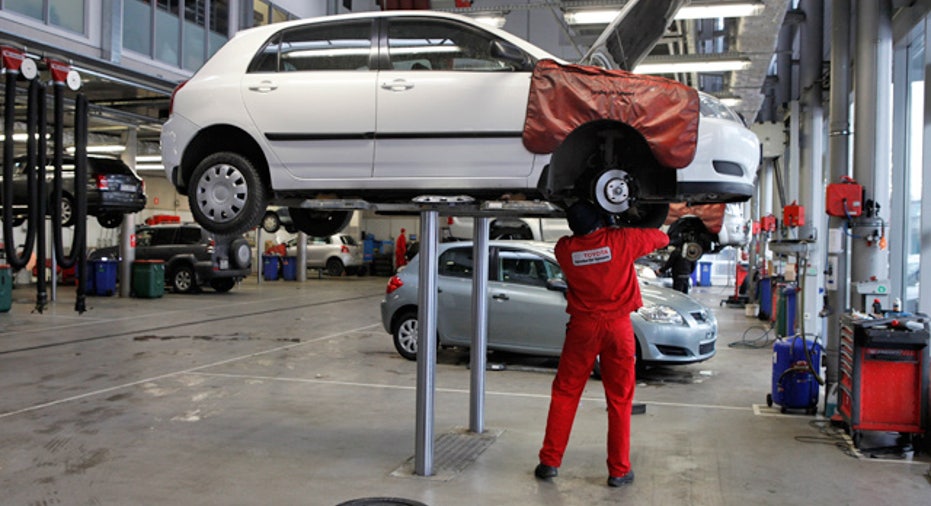Here's How Many Car Accidents You'll Have

If you haven't been in a car accident, consider yourself lucky. Or overdue.
By car insurance industry estimates, you will file a claim for a collision about once every 17.9 years. That's if you're an average driver, which, whether you're willing to admit it or not, you likely are.
So if you got your license at age 16, the odds are quite good that you'll experience some kind of crash by the time you're 34, at the latest. Over the course of a typical long, driving lifetime, you should have a total of three to four accidents.
Chances are these crashes won't be deadly. There are about 10 million accidents of all kinds each year, from parking lot scrapes to multi-car pileups, according to the National Safety Council; in 2009, just three of every 1,000 of those accidents involved fatalities.
But these crashes most likely will be costly. More than 2 million people are injured in crashes every year. In 2010, the average claim for injuries to cover both the insured driver and others involved in the crash had risen to $23,450, thanks in large part to soaring medical costs, according to the Insurance Research Council, a nonprofit research group.
[Let CarInsurance.com help you find affordable auto insurance now.]
Accidents on the installment plan
Which brings us to why this little-known number is so critical. (We got the accident-every-18-years statistic from the Property Casualty Insurers Association of America, a trade association that analyzes insurance data.)
Insurance companies may sell protection -- and one night of TV advertisements suggests that they do a pretty good job on this front -- but they're in the game to make a profit. And they don't make a profit by paying for your accidents. They do so by getting you to pay for your accidents -- in advance.
You're paying a smaller portion over a longer period of time, explains Dee Dee Mays, an actuary with Perr&Knight, an insurance consultancy. It's kind of a way to spread your risk.
How to price your insurance rates low enough to lure you from a competitor, but high enough to make a profit on your future accidents, involves elaborate risk assessments that constitute the secret sauce of the insurance business.
But all can be boiled down to the need to determine two things:
*How many accidents will occur? Or, put another way, how likely is each driver in each car to have an accident? And,
*How much will each accident cost?
You're already a statistic
How often you're considered due for that next accident depends a little, too, on your insurer. A company that insures large numbers of young drivers - who are far more likely to have accidents -- will likely budget for a shorter gap between crashes. State Farm, the country's largest auto insurance company, has customers with slightly lower-than-average accident rates.
"If we just take collisions, the average State Farm policy holder has a collision claim once every 19 years," says State Farm spokesman Dick Luedke.
But odds are made to be beaten, right?
Many factors are beyond a driver's immediate control. Clearly you can't alter road conditions or medical costs, at least by the time your insurance bill is due. That, in the insurance game, makes you a firm stat: a driver paying for the accident he's expected to have every 17.9 years.
But there are some ways you can move the needle, ways that will both change your lifetime-accident rate and lower your insurance premium.
Assuming that, at least today, you can't change your age, your driving history, or what kind of car you drive, here are some behaviors you can incorporate to lower your accident risk and, in the end, your insurance rates.
Don't drive impaired. No single factor is more likely to cause an accident than a driver impaired by alcohol or other drugs. One-third of fatal accidents in this country are attributed to drunken drivers alone.
Don't drive during the vampire hour. The deadliest three-hour periods on American roadways are between midnight and 3 a.m. on Saturdays and Sundays, according to the National Highway Traffic Safety Administration (NHTSA). Of those fatal crashes, 66% involve alcohol-impaired driving.
Keep your eyes on the road. NHTSA data show that 995 of the 30,797 fatal crashes in 2009 involved drivers using cell phones. Nearly, 5,500 traffic deaths involved a driver distracted by something inside the car, including technology, according to the U.S. Department of Transportation.
Don't speed. Nearly one-third of all fatal accidents are attributed to speeding or driving too fast for conditions. Speeding is the single greatest contributor to accidents other than impaired driving. Insurance companies love such proven risk factors when assessing rates. Anyone who's seen their premiums skyrocket after getting a ticket knows this well.
Avoid congestion. Less than a quarter of both injury crashes and non-injury crashes in 2009 occurred on roadways with a posted speed limit of 55 mph or higher. Fewer intersections apparently make for fewer crashes. Be careful, though: When accidents do occur on these highways, they are more likely to be deadly, accounting for nearly half of all traffic fatalities.
The original article can be found at CarInsurance.com:Here's How Many Car Accidents You'll Have



















